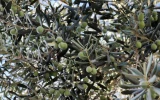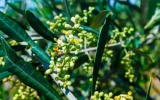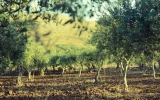High Density Olive Farming: 8 Benefits and Techniques
High-density olive farming, employing upwards of 500 trees per acre, significantly surpasses traditional methods in both yield and efficiency. This approach leverages advanced irrigation and pruning techniques to enhance tree productivity and fruit quality, making it a cornerstone of modern agriculture. This article will explore the eight key benefits of this farming technique and provide insights into how farmers can implement these techniques to transform their olive farm operations.
High-density olive farming increases yield by optimizing space, allowing mechanized harvesting, and reducing labor costs. It also enhances tree health and fruit quality through better water and nutrient management, with early-bearing trees accelerating returns.
However, high-density farming demands significant investment and careful management to prevent overcrowding and disease. Let's find out what techniques can be employed to boost yield and efficiency on your farm.
Summary
- High-density olive farming utilizes closer tree spacing and advanced machinery, significantly increasing productivity and efficiency in harvesting.
- Super high-density (SHD) olive farming involves planting olive trees at densities of 600 to 1600 trees per hectare, facilitating mechanized harvesting and improving water management.
- Adopting high-density planting methods increases yield per hectare through efficient land use and reduces water usage with precise irrigation methods.
- Super-intensive olive farming focuses on maximizing yield per hectare with high tree density, complete mechanization of the harvest process, and improved soil and plant health.
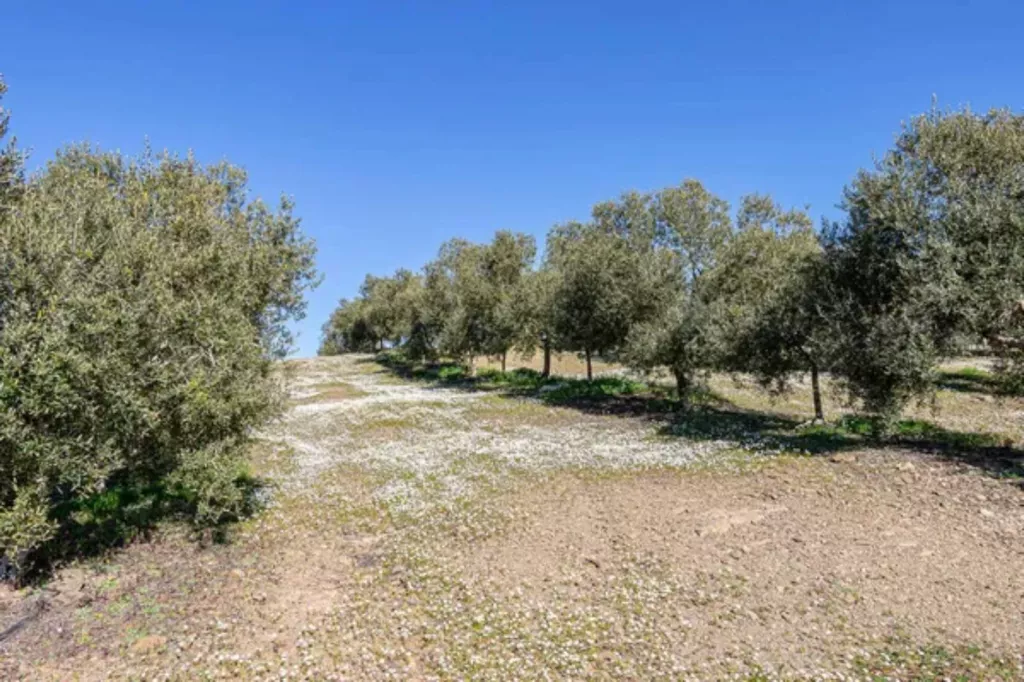
On this page:
Basics of High-Density Olive Farming
High-density olive farming revolutionizes the way you think about olive cultivation and olive oil production. This approach uses closer spacing of trees to increase productivity per hectare, making it a game-changer in the field of agriculture.
By optimizing space and using advanced machinery, farmers can now expect not only higher yields but also efficiency in harvesting.
In embracing high-density olive farming, you are also tapping into the growing market for olive oil. With the adoption of precision farming techniques, you enhance the quality of your produce, ensuring a competitive edge in the olive oil industry.
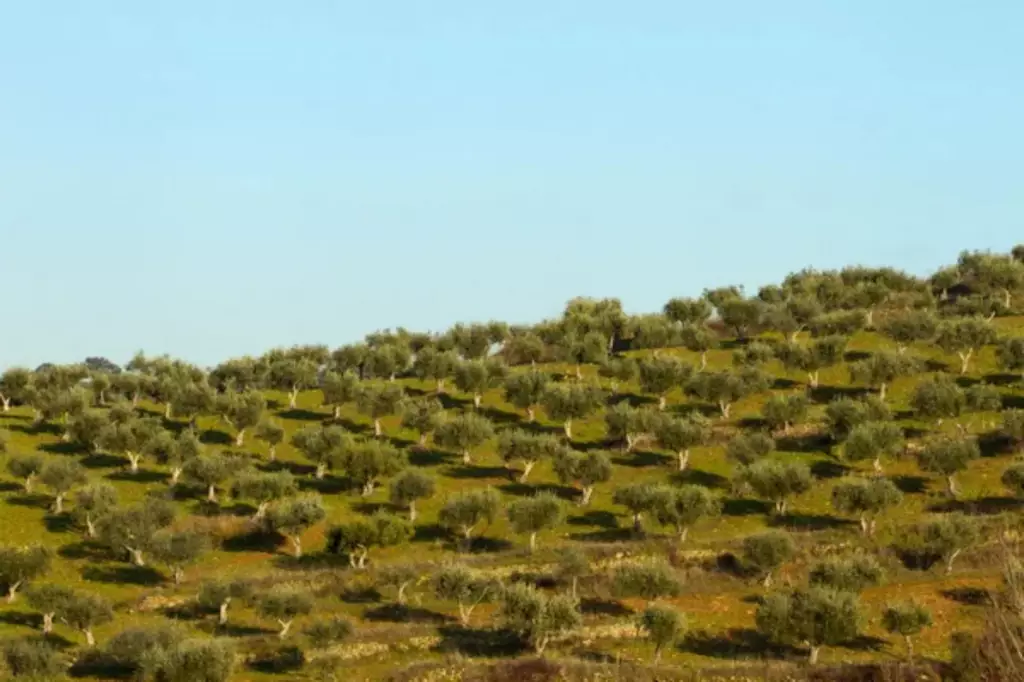
This innovative model provides you with the ability to meet demand more effectively and sustainably, securing your place in the global market.
Super high-density olive farming
Super high density (SHD) olive farming is a modern technique that significantly increases efficiency in olive production.
In SHD systems, you plant olive trees at a density ranging from 600 to 1600 trees per hectare. This is much higher than traditional groves, and the arrangement is typically in parallel rows to facilitate the use of mechanized harvesters.
The key advantages include:
- Increased yield: By planting more trees per hectare, you can achieve higher production levels.
- Faster harvest: With the trees planted in orderly rows, mechanized harvesting makes the process quicker and reduces labor costs.
- Better water management: SHD orchards often have more efficient irrigation systems.
Here's a glance at the features of SHD olive orchards:
| Feature | Description |
|---|---|
| Tree Density | 600-1600 trees/ha |
| Arrangement | Parallel rows |
| Harvest | Mechanized |
| Yield | Triply productive than traditional |
-
Tree arrangement: Olive trees are planted in parallel rows, and the trees are shaped like bushes. They are usually supported by racks or trellises for easier maintenance and mechanized harvesting.
-
Harvesting: Thanks to the layout, you can use machines to harvest olives, which boosts efficiency and reduces labor costs.
-
Growth and oil production: The tight spacing accelerates growth and leads directly to higher olive, and therefore oil, yields. Research has shown that you can expect about three times the yield in a super-intensive system versus traditional methods.
In an SHD olive orchard, the trees are pruned to keep them smaller, or 'bush-like,' and supported by trellises or racks. This makes it easier for you to manage the grove and ensures that the trees get ample sunlight and air circulation, leading to healthier olive production.
However, the increased density requires careful management of resources and a good understanding of the specific needs of the olive variety you choose to plant.
Benefits of High-Density Planting
High-density planting in olive farming offers numerous advantages, from maximizing production to protecting natural resources. Here’s how adopting high-density planting can be beneficial for your olive orchard.
It can increase yield per hectare
By planting olive trees close together, you increase the number of trees per hectare, which can lead to a greater yield. This method utilizes space more efficiently, enabling the production of more olives without needing more land.
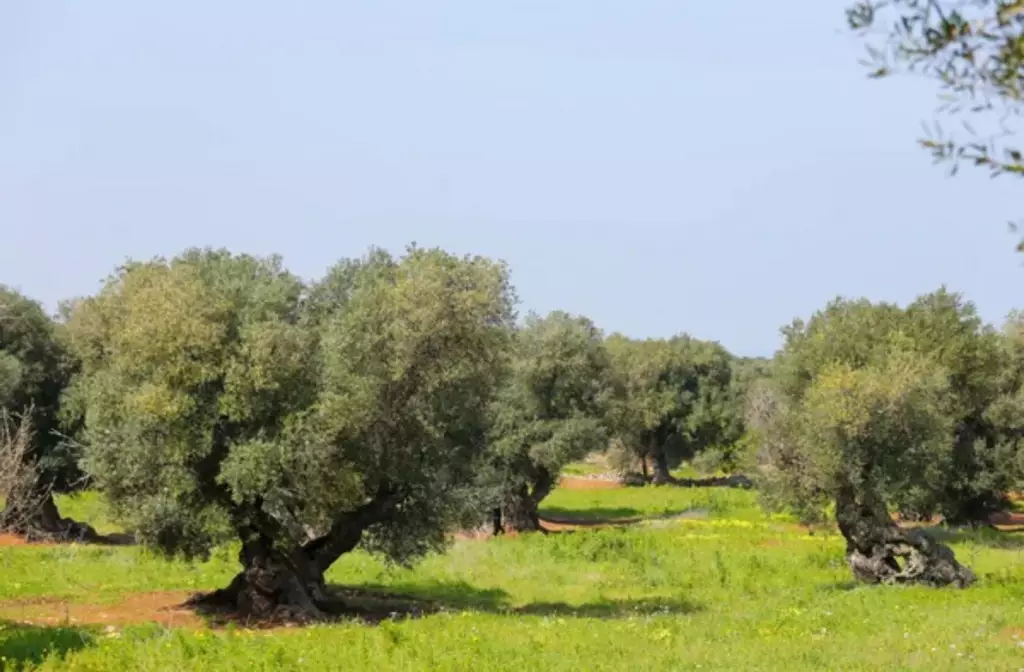
How many olive trees per hectare?
Typically, traditional olive orchards have a lower tree density, often ranging between 100 to 400 trees per hectare. However, in a super high-density olive orchard, you can plant much more densely.
Here's a straightforward breakdown of tree density:
| Orchard Type | Trees per Hectare |
|---|---|
| Traditional | 100-400 (low density) |
| High-density | 200-500 (moderate density) |
| Super high-density | 600-1600 (very high density) |
For a super high-density system, the spacing between trees is much narrower, which facilitates mechanized harvesting. This method is optimized for certain olive varieties and requires specialized farming machinery.
Be prepared to invest in agricultural technology for maintenance and harvest if you're aiming for the upper end of tree density.
How many kg of olives per hectare?
When you're evaluating the yield of your olive orchard, key figures can give you a sense of expected production. Specifically, the super-high-density (SHD) olive orchards have distinct numbers.
For a traditional olive orchard, you might expect production to be considerably lower. However, in a SHD system, the yield can be significant.
As an example, the density of olive trees in such a system can reach up to 1,600 trees per hectare. Starting from the fourth year, each hectare can produce around 100 quintals of olives; that's approximately 10,000 kg per hectare.
Now, this number can vary depending on numerous factors such as the variety of olives, climate conditions, and cultivation practices.
Moreover, the income from these hectare yields can go up to 1,200 euros annually.
It's easy to see how the concentration of trees paired with advanced farming methods can make SHD olive farming an attractive option for farmers looking to increase their output.
Remember, you need to manage your orchard with appropriate techniques to reach these numbers. Adequate irrigation, pruning, and soil management are crucial to achieving the high yield potential of a super-high-density olive orchard.
It offers an efficient use of land resources
High-density planting allows you to get the most out of every square meter of your land. It means more productive olive trees on less land, conserving valuable soil and ensuring sustainable land use.
It reduces water usage due to precise irrigation methods
Precise irrigation methods, such as regulated deficit irrigation, help conserve water. You give your trees exactly what they need, when they need it, reducing water waste.
It lowers labor costs from mechanization
Mechanical harvest becomes viable with high-density planting, as the uniform tree spacing allows machinery to easily navigate the grove. This significantly cuts down on the manual labor required for harvesting.

It gives a faster return on investment due to early production
Olive trees planted in high densities begin producing fruit sooner, offering you a faster return on investment. Early production also means hitting the market quicker, boosting your success.
It improves fruit quality through consistent and controlled growing conditions
A high-density olive farm supports more consistent growing conditions, which can lead to improved fruit quality. With controlled inputs, you’re more likely to harvest olives with the highest oil content and quality.
It provides enhanced disease and pest management
With closer monitoring and a structured environment, managing diseases and pests like olive flies becomes easier. Effective control measures can be implemented swiftly, maintaining the health of your olive grove.
It promotes greater biodiversity conservation
By using less space for farming, high-density planting leaves more land for natural habitats. This practice supports biodiversity and reduces the negative impact on the environment, such as soil erosion.
Techniques for High-Density Olive Tree Planting
In high-density olive farming, you'll employ a range of techniques to boost yield and efficiency. Focused on precision and resource conservation, these methods are designed to maximize the potential of your olive grove.
Plant olive trees in high-density configurations
To increase production in your olive grove, plant trees in high-density configurations. Trees spaced closer together can encourage more growth per area, leading to a higher yield.
In high-density olive plantations, the spacing typically ranges from 200 to 350 trees per acre. You can learn more about spacing guidelines for olive trees in this article.
Utilize drip irrigation systems for water efficiency
Your olive trees need consistent moisture for optimal growth. Drip irrigation is a water-efficient system that delivers water directly to the roots, reducing waste and ensuring that your trees get the moisture they need without excess.
You can learn more about the most effective techniques to water olive trees in this article.
Implement integrated pest management strategies
Integrated Pest Management (IPM) strategies can help you effectively control pests with minimal chemical use.
By monitoring for pests and using biological control agents, you can protect your olive trees while maintaining a more organic farming approach.
Prune and train trees to optimize space and sunlight exposure
Careful pruning and training of your olive trees allow them to get adequate sunlight and air. This maximizes productivity and helps maintain the health of the trees.
The hedgerow system is a common method used in high-density olive orchards.
Apply soil amendments and fertilizers based on soil tests
Soil management is key to successful olive farming. Use soil tests to guide the application of amendments and fertilizers. Ensuring the right balance of nutrients can lead to healthier trees and better olive production.
Select high-yielding and disease-resistant olive varieties
Choose olive varieties like 'Arbequina,' 'Arbosana,' and 'Koroneiki' for your high-density grove.
These cultivars are known for their high yield and disease resistance, qualities ideal for dense planting setups. There are over 500 olive tree varieties and you can find a list of some of the most famous varieties here.
Employ mechanical harvesting equipment
Utilize mechanical harvesting equipment to collect olives efficiently. This method is much faster than traditional hand-harvesting and is well-suited for the structured rows of a high-density orchard, saving you time and labor.
Regularly monitor and manage tree health and soil conditions
Finally, making regular checks on your tree's health and soil conditions prevents small issues from becoming larger problems.
Monitoring allows you to make adjustments to your care routine, ensuring the relentless vitality of your orchard.
How Many Kg of Olives per Tree?
Typically, an olive tree in a traditional orchard produces from 10 to 70 kg of olives annually. However, factors like age, care, and climate impact these numbers significantly.
- Age of tree: Younger trees yield less, whereas mature trees can provide more extensive harvests.
- Olive variety: Some varieties have larger olives, affecting the weight.
- Care: Proper maintenance can help maximize production.
Remember that weight can also fluctuate due to environmental conditions. It's not uncommon for olives to vary in weight, with an average olive fruit weighing around 4 grams; some can be heavier or lighter.
| Farming Practice | Planting Density (trees/ha) | Yield Per Tree (kg/tree) | Notes |
|---|---|---|---|
| Traditional | 60 - 100 | Highly variable, can be 20-100 kg/tree or more | Yield per tree is higher but requires more space and labor. Quality is often considered superior. |
| High Density (HD) | 200 - 400 | Lower than traditional, around 10-20 kg/tree | More efficient use of land and labor, mechanization possible. |
| Super High Density (SHD) | 1,500 - 2,500 | Much lower, around 1-10 kg/tree | Fully mechanized, efficient in terms of yield per hectare despite low yield per tree. |
In traditional olive farming, the trees have plenty of space to grow wide and tall, are typically pruned less frequently, and are often harvested manually. This method requires more land and labor but tends to produce olives of high quality.
The yield per tree can vary widely depending on many factors, including the age of the tree, the variety, and the specific conditions of the year, but it's generally higher per tree due to the larger size and canopy of each tree compared to HD and SHD systems.

Meanwhile, high-density olive farming involves planting trees at higher densities than traditional farming, usually around 200 to 400 trees per hectare. This system allows for some mechanization, especially in pruning and harvesting, which reduces labor costs.
The yield per tree is typically lower than in traditional systems due to the closer spacing and smaller size of each tree, but the overall yield per hectare can be higher due to the increased number of trees.
For super high density (SHD) olive farming, the trees are kept very small, almost in a hedge formation, to facilitate mechanical operations.
The yield per tree is significantly lower than in traditional or HD systems due to the very high planting density and the restricted growth of each tree. However, like HD, the total yield per hectare can be high because of the large number of trees.
Super Intensive Olive Farming
Super-intensive olive farming leverages high tree density to maximize yield per hectare. Your orchard could have anywhere from 600 to 1600 olive trees depending on the variety.
This method uses parallel rows with shorter, bushy olive trees supported by racks.
Here's what you need to know:
- Mechanized harvest: Super intensive farming allows for complete mechanization. From the moment of planting, machines take the lead, which translates into significant labor savings for you.
- High yield: Expect higher production rates—up to three times more than in traditional orchards. This is due to the efficient spacing and pruning methods used.
| Advantages | Details |
|---|---|
| Soil improvement | Mulching increases soil moisture, crucial for healthier trees and better yields. |
| Genetic and health quality | Plants come from nurseries with stringent quality norms, ensuring robust and disease-resistant varieties. |
| Nursery production time | Expect shorter times from nursery to field due to optimized growth conditions. |
Super-intensive systems focus on efficiency and output. While initial investments in technology might be higher, the payoff is in the bumper crops you'll harvest.
With the pressing need for sustainable practices, you might find that intensive olive farming can reduce global warming potential as you optimize land use.
